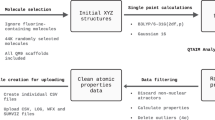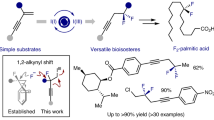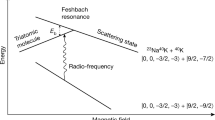Abstract
FOR reasons explained in a forthcoming paper, I suggest the use of the term ‘di-atom’ in place of ‘diatomic molecule’ in spectroscopic nomenclature.
This is a preview of subscription content, access via your institution
Access options
Subscribe to this journal
Receive 51 print issues and online access
$199.00 per year
only $3.90 per issue
Buy this article
- Purchase on SpringerLink
- Instant access to full article PDF
Prices may be subject to local taxes which are calculated during checkout
Similar content being viewed by others
References
C. H. Douglas Clark, NATURE, 133, 873, June 9, 1934.
W. L. Bragg, Phil. Mag., vi, 40, 169 ; 1920.
N. V. Sidgwick, “The Covalent Link in Chemistry” (Cornell, University Press, 1933) (see Table XVIII on p. 85).
W. Jevons, “Report on Band-spectra of Diatomic Molecules” (Cambridge University Press, 1932) (see Appendix II, p. 280).
Author information
Authors and Affiliations
Rights and permissions
About this article
Cite this article
CLARK, C. Atomic Radius of Fluorine. Nature 134, 99–100 (1934). https://doi.org/10.1038/134099b0
Issue date:
DOI: https://doi.org/10.1038/134099b0



